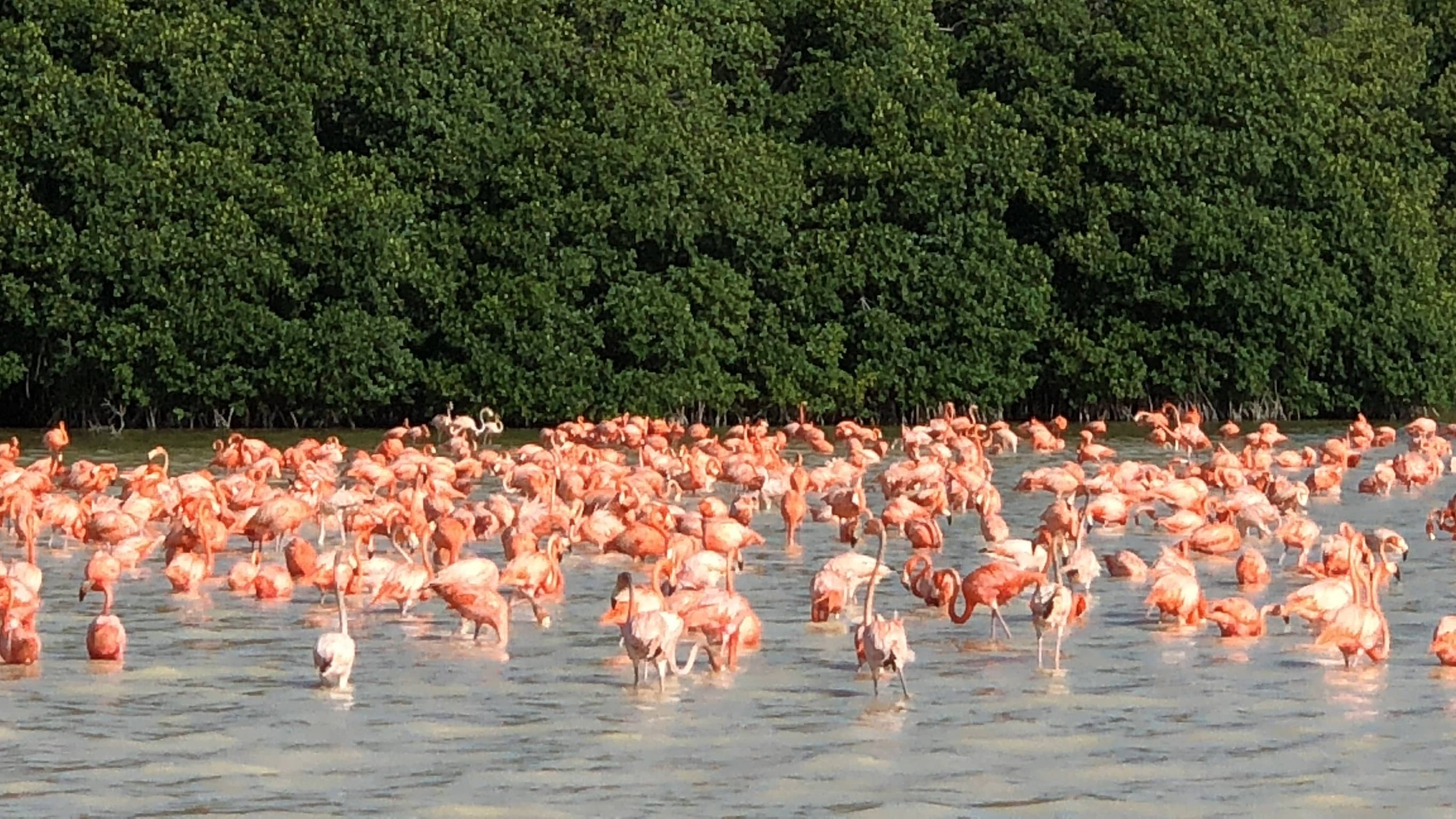When Coconut and J were in elementary school we lived in Alexandria, Virginia, and had a membership to the National Zoo. Entry to the zoo, as it is to all DC-area Smithsonian operations, is free. So you may ask yourself, why did they need to purchase a membership? Good Smithsonian marketing. We got caught up in the idea that we would take advantage of all the other zoo membership benefits, like going to sleepovers in the park with the mosquitoes and having 24-hour access to the pandas on the panda-cam.
For some reason, we never took advantage of any of that stuff. But being members of the zoo had other perks. We got free parking and discounts on food concessions. Of course, even with these perks, we didn’t go to the zoo that often because the only time we really had the time to go was on the weekends when we weren’t at work and that is when the rest of the world went to the zoo.
Even when we did go, we were really too cheap to take advantage of the discounted concessions. A ten percent discount on a $12 hamburger doesn’t seem like much of a deal, after all. We packed our own snacks. And we hardly ever took advantage of the free parking because we hardly ever drove to the zoo. Driving in DC on weekends is insane. So, we’d have to take the Metro, and taking the DC Metro on weekends is also insane. Plus it was a long walk from the Metro station to the zoo entrance. And it always seemed like whenever we decided to go to the zoo it was a zillion degrees outside. And, in case you didn't know, the zoo is built on the side of Mt. Everest. You have to be pretty disciplined to go from the petting zoo at the bottom of the hill to the elephants at the top without having to stop for ice cream.
The one time we did go to the zoo we ended up at the Bird House, which may or may not also be the name of a pub near the Thames River where dockworkers go to pick up women. But at the National Zoo, the Bird House is an aviary where lots of birds fly around in a semi-native but still captive environment for our enjoyment.
Somehow J and I got lost in a dark corner of this enormous oval enclosure and came face to face with a peacock that had its tail feathers spread like a pervert will open his raincoat. J and I stood there with our mouths hung open. But when the peacock shook its train like a lustful belly dancer and took a few steps towards us, we turned tail and ran. Rather than being flattered by the affection, we were both terrified.
Whenever we went to the zoo after that visit I always wanted to go where the birds were. Not into the Bird House, I avoided that peacock like an old girlfriend. But I liked to go to the outdoor pens where the larger birds were kept. For some reason I was drawn to them, even though they didn’t do much but stand around on rocks and tree branches. Did you know storks can grow to be five feet tall? That’s nearly as tall as my wife. The first time I saw one I thought it was a short man with a cloak thrown over his shoulders.
As the years flew by, I continued to have a special affection for birds. I put bird seed on the roof of our shed so that we could eat breakfast while watching exotic species of the DC metro area - cardinals and blue jays - come to feed. During our year of overland travel in Mexico and Central America, one of my stated goals was to spot the Red-Rumped Warbler - a species native to middle America. Checked that box in Costa Rica. The last time I spent alone with my mom before she passed of cancer was sitting together looking out her sliding glass door as birds and squirrels snacked on the seeds my father had spread on the ground. A hawk came shooting out of the trees, snatched a squirrel in its talons, and disappeared over the canopy. Talk about exciting! And who could forget the appearance of the very rare Andean Belching Bird during my fortieth birthday party on the Inca Trail.
Each of these experiences has drawn me closer and closer to booking that vacation which will indicate once and for all that I’ve arrived in Geezerville - a bird-watching tour. We recently had a family vacation on the Yucatan peninsula of Mexico that inched me closer to that future. The Reserva de la Biosfera Ria Celestun is home to a large flamingo colony and a declining school of shrimps; declining because the large colony of flamingos are feasting on them for breakfast, lunch, and dinner. The beta carotene in the shrimp gives color to the feathers of the flamingo. You can tell an older flamingo from a younger one by the beautiful, deep pink hue of its feathers. There are no activist groups advocating to save the shrimp. This is because no one wants to see a white-feathered flamingo. Go pink.
On the boat, headed in the direction of the flamingos.
For $1,200 pesos, the equivalent of $60 USD, R, Coconut, J, and I arranged an “official” one-hour guided boat tour from the highway bridge on the approach to the beach village of Celestun. We could have negotiated a cheaper tour from one of the entrepreneurs at the beach, but we’ve gotten lazy in our old age and decided the few bucks we would have saved wasn’t worth the hassle of haggling.
Our tour took us across the mangrove lagoon to a spot where hundreds of the brightly-colored pink birds had gathered to eat and chatter like a raft of ducks. Seriously, if I had been blindfolded and placed in the middle of the birds without having seen them, and given three guesses as to what was making the quacking noise, my guesses would have gone something like this.
First guess: Ducks!
Second guess: They’re not ducks? Are they geese?
Third guess: Are you sure they’re not ducks?
That’s how much they sounded like ducks. But they weren’t ducks. They were flamingos, and as we floated around them, gawking from the shade of our covered boat, I realized that I had never seen a flamingo except for in a zoo and I think once at a safari at Great Adventure in Jackson, New Jersey, which is not their native environment. That is to say, I had never seen a flamingo do anything but stand there in captivity. And here they were in their native environment. Lots of them.
The film that is yet to be made, “Attack of the Giant Flamingos”. Cause after all, if flamingos were giant, humans would look like shrimp to them.
And what, you might ask, do flamingos do when viewed in their native environment? They do a lot of standing around. But they also feed on shrimp, which involves them lowering their long necks so that they can submerge their heads underwater and get at that all-you-can-eat shrimp buffet. They also walk, which, as they push off their trailing leg, almost looks like they are ice skating. But the most unforgettable thing that they do is fly. Not trying to be insensitive here, but I’ll also say that it is one of the most hilarious things I’ve ever seen. When they take off, their little feet at the end of their long, spindly legs alternately pat-pat-pat the water as they get a running start before lift-off. And once airborne they look like a stick with wings. Check out this video.
There were a lot of other birds in the reserve, including a relative of the albatross, herons, cormorants, and of course, lots of gulls. They all congregated on Bird Island, which is not the name of an island in the middle of the Thames River where English sailors go on Spring Break. At least I don’t think it is. No, in this case, Bird Island is just a place were birds that are not as interesting as flamingos go to hang out when in the reserve. Apparently, flamingos aren’t the only bird that likes to snack on shrimp.
Our tour guide also gave us a thrill when he gunned the engine and burst through the trees into a hidden waterway through the mangrove where we slowly trolled like we were on a real-life Disney World jungle ride. I kept waiting for a hippo to surface with its pink gaping mouth ready to swallow us whole. When that didn’t happen, we got out of the boat and swam in a natural spring after the guide assured us that no one had been eaten by a crocodile yet.
Looks like prime crocodile eating grounds to me, but our guide assured us it was not.
Which brings me back to the National zoo. Shortly after our trip to the reserve, the Washington Post reported that a wild fox snuck into the flamingo enclosure and made dinner out of 25 of the zoo’s flock of 74 flamingos. This is less than have met death by mineral mining, but still, it’s a lot. The fox also ate a duck.
Officials stated the fox was able to access the flamingo enclosure by slipping through a hole in the fencing that was the size of a baseball. After eating 25 flamingos, one wonders how he got back out. A not so happy update to the story can be found here.
Officials surmise that the duck was just in the wrong place at the wrong time. They suspect he had wandered over to the flamingo enclosure because he heard a bunch of quacking and was hoping to shake some tail feathers with his own species. His last words, captured on the flamingo cam, were, “Dang bro, I thought you guys were ducks.”



